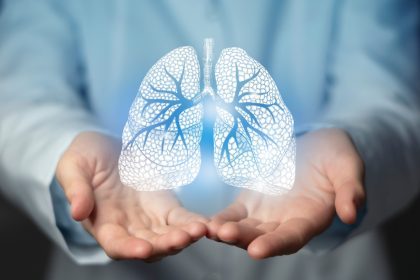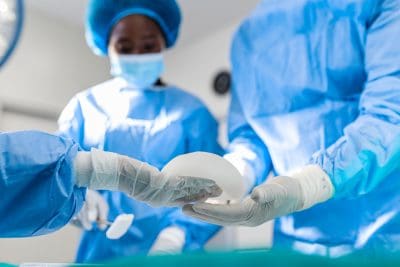Airway reflux, also known as laryngopharyngeal reflux, affects millions of people who experience stomach acid reaching their throat, vocal cords, and respiratory passages. Unlike traditional heartburn, this condition often occurs without obvious symptoms, earning the nickname “silent reflux.” The encouraging news is that airway reflux can indeed be reversed through targeted interventions that address both the underlying causes and the resulting airway damage.
The journey to healing requires understanding how stomach acid damages delicate respiratory tissues and implementing comprehensive strategies that allow natural repair processes to restore normal function. With consistent effort and the right approach, most people can achieve significant improvement or complete reversal of their airway reflux symptoms.
Understanding airway reflux damage and healing potential
Stomach acid that reaches the airways creates inflammation and irritation in tissues not designed to handle such acidic exposure. The larynx, pharynx, and upper respiratory tract have different protective mechanisms compared to the stomach lining, making them particularly vulnerable to acid damage.
When acid repeatedly contacts these sensitive areas, it causes swelling, tissue thickening, and chronic inflammation that manifests as hoarseness, chronic cough, throat clearing, and breathing difficulties. The good news is that these tissues possess remarkable healing capabilities when given the right conditions and sufficient time to recover.
The reversal process involves two critical components: stopping the acid exposure that causes ongoing damage and creating optimal conditions for tissue repair. Both elements must work together for successful healing, as continued acid exposure prevents recovery even when other healing factors are present.
Natural healing mechanisms of respiratory tissues
The airways contain specialized cells that constantly work to maintain healthy tissue and repair damage from various sources. These natural healing processes become more effective when acid exposure decreases and supporting factors are optimized.
Mucus production normalizes when acid irritation stops, allowing protective secretions to resume their proper consistency and function. Thickened, sticky mucus that characterizes airway reflux gradually returns to normal, reducing the constant need for throat clearing and coughing.
Inflammatory processes subside as tissue pH returns to normal levels, allowing swollen vocal cords and throat tissues to reduce in size and regain normal function. Voice quality often improves dramatically as this healing progresses over several weeks to months.
Dietary modifications that promote airway healing
Food choices play a fundamental role in both causing and reversing airway reflux. Certain foods trigger acid production and weaken the barriers that prevent stomach contents from reaching the airways, while others support healing and strengthen protective mechanisms.
- Alkaline foods help neutralize excess acid and create a healing environment for damaged tissues. Leafy green vegetables, melons, bananas, and root vegetables provide natural alkalinity that counteracts acidic conditions in the digestive system and airways. These foods also supply vitamins and minerals essential for tissue repair.
Incorporating alkaline water between meals can provide additional acid-neutralizing benefits without interfering with normal digestion. The optimal pH range for healing appears to be between 8.5 and 9.5, which helps restore normal tissue pH levels more quickly.
- Anti-inflammatory foods accelerate tissue repair by providing compounds that reduce swelling and support cellular healing processes. Ginger, turmeric, and omega-3 rich foods like wild-caught fish offer natural anti-inflammatory effects that complement the body’s healing mechanisms.
Fresh herbs such as basil, oregano, and thyme contain volatile oils that soothe irritated airways while providing antimicrobial benefits that prevent secondary infections in damaged tissues. These can be incorporated into meals or prepared as gentle teas.
Timing and meal structure for optimal healing
When and how you eat significantly impacts acid production and the likelihood of reflux reaching the airways. Strategic meal timing creates windows of opportunity for healing while preventing ongoing damage.
- Eating smaller, more frequent meals reduces the volume of stomach contents and decreases pressure that can force acid upward into the airways. This approach also helps maintain more stable acid levels throughout the day rather than creating large spikes after big meals.
The final meal of the day should occur at least four hours before bedtime to allow complete stomach emptying before lying down. This timing prevents nighttime reflux episodes that often cause the most severe airway damage due to prolonged acid contact during sleep.
Chewing food thoroughly and eating slowly promotes better digestion and reduces the mechanical pressure that can contribute to reflux. Taking time with meals also allows natural satiety signals to prevent overeating, which commonly triggers reflux episodes.
Lifestyle modifications that support airway recovery
Physical habits and environmental factors significantly influence the healing process for airway reflux. Simple changes in daily routines can accelerate recovery and prevent symptom recurrence.
- Sleeping position adjustments prevent nighttime acid exposure that undoes daytime healing progress. Elevating the head of the bed six to eight inches using blocks or wedges creates a gentle slope that uses gravity to keep stomach contents from reaching the airways during sleep.
Side sleeping, particularly on the left side, positions the stomach in a way that reduces reflux likelihood compared to back or right-side sleeping. This position takes advantage of anatomical structures to create a natural barrier against acid migration.
Avoiding late-night snacks and beverages prevents stimulation of acid production during the crucial overnight healing period. The stomach naturally produces less acid during sleep when not stimulated by food, creating optimal conditions for airway tissue repair.
Stress reduction techniques that enhance healing
Emotional and physical stress directly impact digestive function and acid production, making stress management a crucial component of airway reflux reversal. High stress levels increase acid production and delay tissue healing, while relaxation promotes both digestive balance and repair processes.
- Deep breathing exercises serve a dual purpose in airway reflux recovery. The relaxation response reduces stress-induced acid production while the breathing techniques themselves help restore normal airway function and strengthen respiratory muscles weakened by chronic irritation.
Diaphragmatic breathing, performed for 10-15 minutes several times daily, helps retrain breathing patterns that may have been disrupted by airway inflammation. This technique also stimulates the vagus nerve, which helps regulate digestive function and reduces inappropriate acid production.
Progressive muscle relaxation and meditation practices address the underlying stress that often perpetuates digestive dysfunction. Regular practice of these techniques creates measurable improvements in both reflux symptoms and airway healing rates.
Hydration strategies for airway restoration
Proper hydration supports multiple aspects of airway reflux healing, from diluting stomach acid to maintaining healthy mucus production in the respiratory tract. The timing and type of fluids consumed can significantly impact recovery speed.
Room temperature water consumed between meals helps dilute stomach acid without interfering with digestion. Cold beverages can slow digestion and potentially worsen reflux, while very hot drinks may irritate already sensitive airway tissues.
Herbal teas made from chamomile, licorice root, or slippery elm provide soothing compounds that coat and protect irritated throat tissues. These beverages offer hydration benefits while delivering healing compounds directly to damaged areas.
Environmental factors that support or hinder healing
Air quality and environmental exposures significantly impact the healing process for airway-damaged tissues. Poor air quality can perpetuate inflammation and delay recovery, while clean air environments accelerate healing.
Avoiding cigarette smoke, chemical fumes, and strong fragrances prevents additional irritation to healing airways. These exposures can cause inflammation that mimics or worsens reflux damage, making it difficult to assess true healing progress.
Using air purifiers and maintaining adequate humidity levels in living spaces creates optimal conditions for respiratory tissue repair. Dry air can worsen throat irritation and slow healing, while excessively humid conditions can promote bacterial growth.
Monitoring progress and adjusting treatment approaches
Successful airway reflux reversal requires patience and careful attention to symptom changes over time. Healing typically occurs gradually over weeks to months, with some symptoms improving before others.
Voice quality often improves within the first few weeks of treatment, as vocal cord swelling subsides relatively quickly when acid exposure stops. Chronic cough and throat clearing may take longer to resolve as deeper tissue inflammation requires more time to heal completely.
Keeping a symptom diary helps identify which interventions provide the most benefit and allows for treatment adjustments based on individual response patterns. This approach helps optimize the healing process for each person’s unique situation.
Long-term strategies for preventing recurrence
Once airway reflux symptoms improve, maintaining the changes that enabled healing prevents symptom return and protects the respiratory system from future damage. Many people find that they can gradually liberalize some restrictions while maintaining core protective practices.
Continuing with smaller meal sizes and avoiding late-night eating typically remains important for long-term success. These habits become easier to maintain as they become routine and as people experience the benefits of better digestive health.
Regular stress management practices and adequate sleep continue to support both digestive health and overall well-being long after initial healing occurs. These lifestyle factors provide benefits that extend far beyond reflux prevention.
The reversal of airway reflux represents a significant achievement that improves quality of life, respiratory function, and overall health. With consistent application of these proven strategies, most people can expect substantial improvement in their symptoms and restoration of normal airway function. The key lies in addressing all contributing factors simultaneously and allowing adequate time for natural healing processes to repair the damage caused by chronic acid exposure.

















